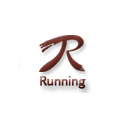Understanding residual stress: from generation to elimination
Introduction
Are you curious why metal parts are prone to deformation after processing? Why do bridge welds suddenly crack? Behind these problems, there may be an 'invisible killer' - residual stress! Today, we will unveil its mysterious veil, from the causes to the actual impact, and then to the detection and elimination methods, in one article full analysis!
1. What is residual stress?
Simply put, residual stress refers to the stress that remains inside the material even after external forces, temperature changes, or the completion of the machining process. It's like rolling a piece of paper into a ball and then unfolding it, leaving wrinkles on the surface. Even without applying external force by hand, the pulling and deformation of fibers inside the paper still exist. This kind of "permanent scar" is residual stress, similar to the surface appearing flat after metal processing, but actually having "numerous scars" inside.
Macroscopic and microscopic: manifested macroscopically as tensile or compressive stress; On a microscopic level, it is closely related to lattice deformation, phase transition, and other phenomena.
Schematic diagram understanding: Imagine a bent metal rod. After removing external forces, although its shape returns, there is still a stress field inside that resists deformation.

2. Where does residual stress come from?
Its generation mainly stems from uneven physical changes:
Mechanical processing: Cutting, forging, welding and other processes can cause local plastic deformation of materials, resulting in uneven stress distribution in various parts.
Temperature gradient: For example, the difference in expansion and contraction between the high-temperature and low-temperature zones during welding.
Phase transformation and compositional differences: During metal cooling, there is a structural transformation (such as austenite → martensite), and the volume change varies in different regions.
One sentence summary: Where there is' imbalance ', there is residual stress!

3.The 'double-edged sword' effect of residual stress
It can not only destroy the sky and earth, but also benefit humanity. The key lies in how to utilize it:
negative impact
Reduce fatigue life: Tensile residual stress accelerates fatigue crack propagation, leading to premature failure of parts.
Induced brittle failure: Under low temperature or impact loads, residual tensile stress and external stress may superimpose, causing the material to fracture "without warning".
Intensifying corrosion: Tensile stress can accelerate stress corrosion cracking, especially in chemical equipment, which is extremely harmful.
Positive application
Surface strengthening: processes such as shot peening and nitriding introduce compressive residual stress, which can significantly improve the fatigue strength of parts (such as engine crankshafts and aircraft landing gear).

4.How to detect residual stress ?
The detection methods are divided into two categories: destructive and non-destructive:
Destructive testing
Drilling method: Drilling holes on the surface and measuring the released stress through strain gauges (with high accuracy but damaging the workpiece).
Peel off method: Remove material layer by layer and deduce stress distribution based on deformation (suitable for flat or cylindrical specimens).
NDT
X-ray diffraction method: using changes in interplanar spacing to measure stress (most commonly used and highly accurate).
Ultrasonic method: Evaluating internal stress through changes in sound velocity (suitable for large volume workpieces such as rails and welds).
Magnetic measurement method: suitable for ferromagnetic materials, determining stress through changes in magnetic permeability.
5.Three tips for eliminating residual stress
Do you want the material to 'relax your mind and body'? Try these methods:
| Method | theory | relative merits |
| natural aging | Let it sit for a few months to slowly release the stress | Environmentally friendly but time consuming, suitable for non-urgent workpieces |
| thermal aging | Heat to a specific temperature to accelerate stress relaxation | High efficiency, but large energy consumption, may deform |
| vibration aging | High frequency vibrations "break up" stress fields | Fast, low cost and wide applicability |
Industry trend: Fully automatic vibration aging equipment (such as the HAKEN HK3012) is becoming mainstream, can be completed in 1 hour, environmentally friendly and efficient!
6.Engineer's Practical Suggestions
Design phase: Optimize processing technology to reduce uneven deformation (such as symmetrical welding, control cooling rate).
Testing selection: X-ray method is preferred for precision parts, while ultrasonic method can be used for large structures.
Elimination decision: Choose vibration aging for mass production and heat aging for high-precision parts.


